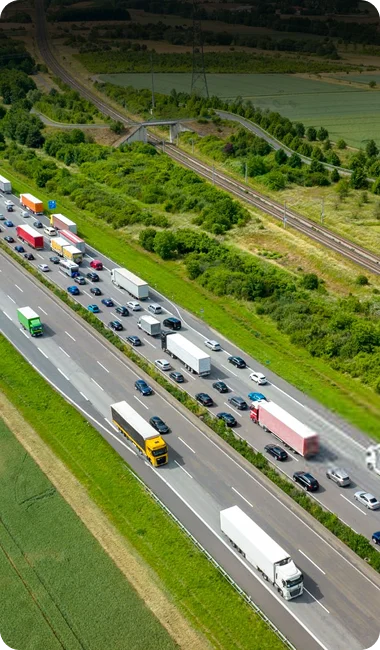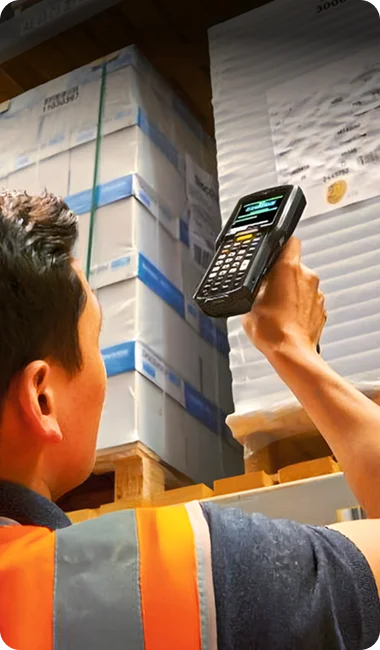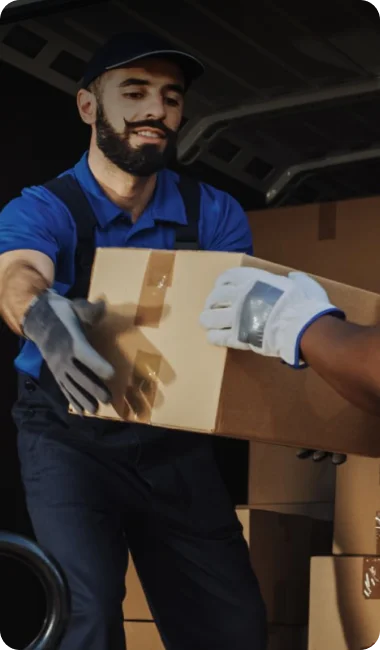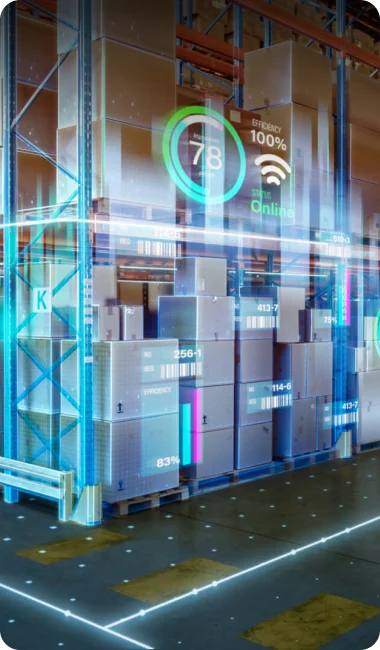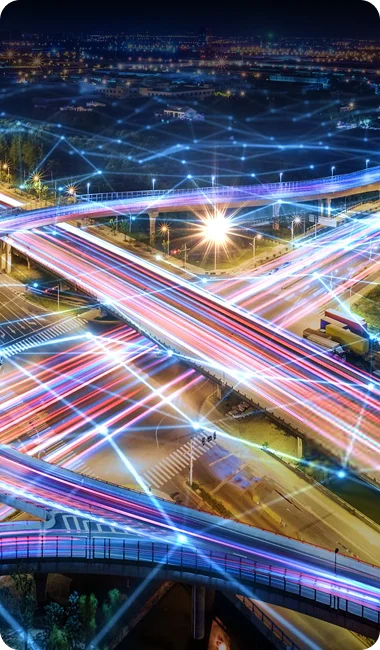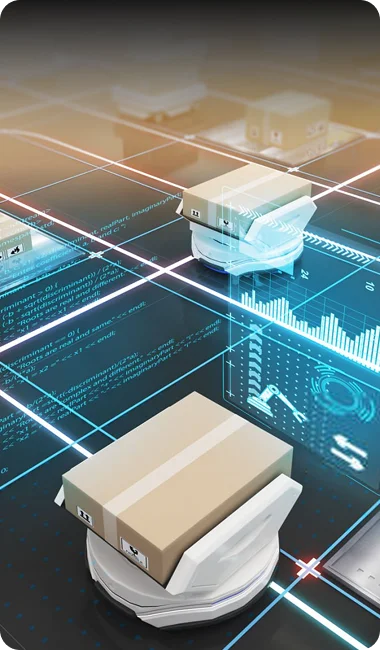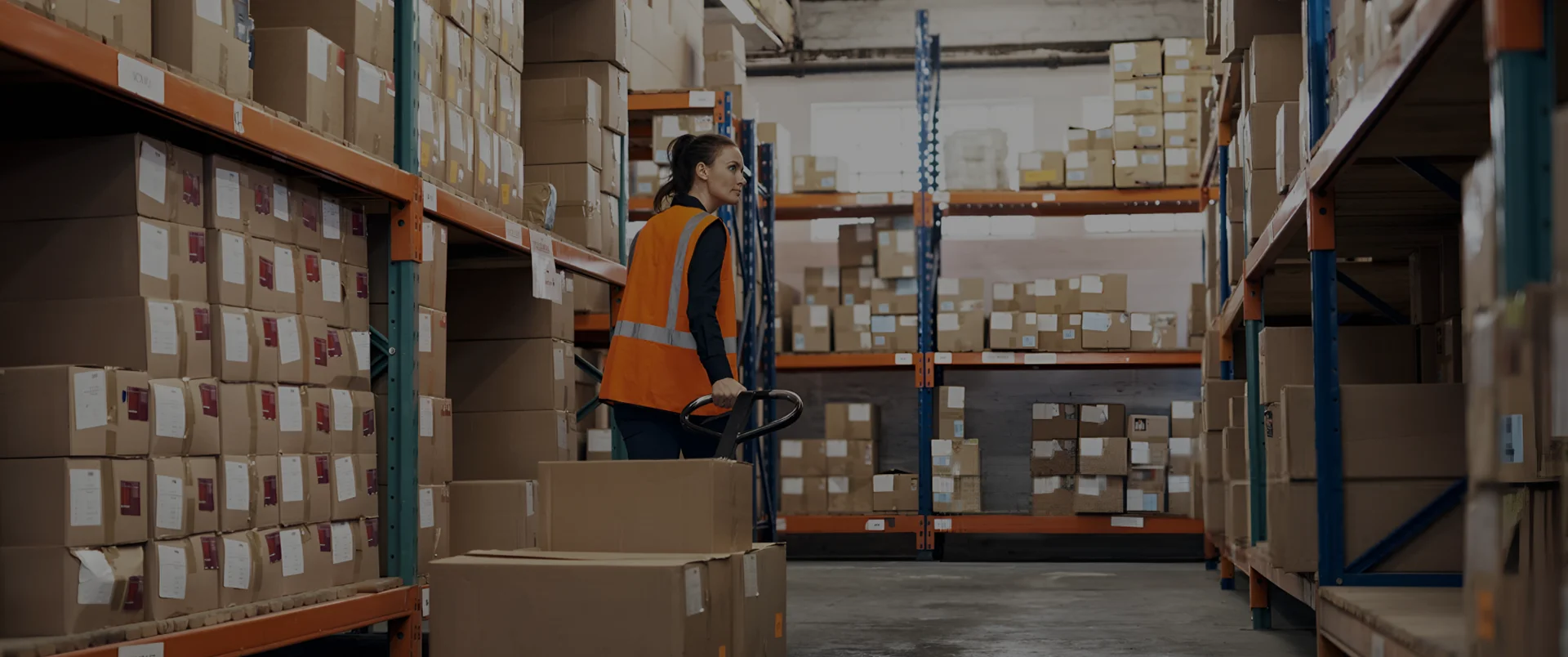
- AWL
- Solutions
- Reverse Logistics
Top Reverse Logistics Company
Gain a competitive advantage in the e-commerce market by efficiently managing the returned goods and channelizing them back to the warehouse.

Top Reverse Logistics Companies in India
AWL India is one of the few Indian companies with expertise in handling complex procedures like returns, consolidating products as per company’s policy, redistribution and destroying or recycling old products effectively.
With growing competition in the e-commerce industry, having reverse logistics management is as important as having a supply chain management. AWL promises effective management of the return process by implementing useful strategies to make the process affordable, easy and timely for both the customer and the manufacturer. The reverse logistics process is executed in the following manner:
Step 1: The products to be returned are first retrieved from the customer or the warehouse.
Step 2: All the products returned are consolidated as per company’s policy and quality checks are performed.
Step 3: After examination the products are accordingly returned to the seller, repaired or refurbished. The products to be returned to the manufacturer must be handled quickly within the specified window of 15 days while the refurbished products can be resold to reclaim the profits.
Reverse logistics refers to the area of supply chain management that deals with items or goods that are coming back into the system or moving ‘backward’ through the supply chain. So, the term ‘reverse logistics’ means simply sending the consignment back to the warehouse, manufacturer, etc. This can include a variety of things, including returned goods, the recycling or appropriate disposal of packaging materials used internally, and materials from previously sold products.
Reverse logistics is used when items return from their destination back via the supply chain to the seller and maybe back to the suppliers, manufacturer, organization, or point of origin. Most of the time, the reverse logistics is done when the objective is to sell the product or recover some value from it. Reverse logistics are worth trillions of dollars globally every year and have increased in frequency, especially after the rise of eCommerce in today’s age. Recovering value and encouraging consumer repurchase are the main goals of reverse logistics. At least 1/3rd of goods ordered online and less than 1/10th of in-store sales are returned. Reverse logistics has become a clever strategy by many businesses to increase repeat business and customer loyalty while reducing return-related losses.
Reverse Logistics vs. Traditional Logistics
Traditional logistics focuses mostly on procurement, production, sales, and distribution, occasionally including maintenance and inventory management. It also applies to the administration and delivery of supplies and goods. In the past, the business or organization would frequently handle these tasks on its own. However, the logistics business model has become more varied because of the growing popularity of outsourcing logistics services. Delivery to clients is the focus of traditional logistics. The traditional logistics approach is all but obsolete in several ways.
But reverse logistics, simply put, deals with the return of materials, goods, and customers to their original points of origin. Excess inventory, out-of-date goods, and harmed goods could all be included in these returns. Transporting items to locations for processing or recycling so they may be handled properly also frequently involves using reverse logistics. Reverse logistics has gained a lot of momentum in its development in terms of speed, efficiency, and efficiency with the rise of e-commerce. At the end of the day, we aim for high levels of customer satisfaction because they significantly boost a brand's marketability. Due to the fact that the product's tracking is now continued after it has been delivered to the consumer, one of the key distinctions between reverse logistics and regular logistics is in its planning and control.
Reverse Logistics Works
In warehousing, reverse logistics refers to the process of organizing, managing, and implementing the flow of raw materials, in-process inventory, finished goods, and related information from the point of consumption to the point of origin with the aim of recapturing value or suitable disposal. It is the movement of products away from their destination with the aim of boosting value or for proper disposal. In it, leased machinery, equipment, and other hardware are returned together with the management and sale of excess inventories or raw materials.
Reverse Logistics Process
The process is most visible when a customer returns a product for a refund. The returned goods may be sold again or thrown away forever. Reverse logistics in a warehouse setting refers to any of the following after the initial purchase
- Returns
- Remanufacturing
- Refurbishing
- Unsold goods
- End-of-life
- End-of-life
- Equipment rentals/leasing
- Equipment repairs/maintenance
AWL's 5 Step Approach to Good Reverse Logistics
- When a customer indicates or decides to AWL India that they want to return the received goods, that’s the beginning of the return process. In this, the end customer should specify the product's condition, reason for returning, and include a return authorization. Additionally, this procedure entails planning return shipments, approving reimbursements, and exchanging defective items.
- Once a returned item has been delivered to the AWL India’s centralized processing facility, the team examines it to establish the type of return it falls under. At AWL India, the reverse logistics are optimized and the professionals are aware of where the product has to go even before it arrives. Products are sorted according to their intended use, whether repair, resell, recycle, or refurbish.
- AWL India’s team receives and handles the item if a business requests a return. They keep track of the product's location and ensure that it proceeds smoothly through all return processes to final disposition. The capacity to trace and manage returns from the moment the consumer sends it back through the last step of a refund, warranty repair, or exchange is improved using reverse logistics software.
- At AWL India, the management plans to reduce the daily waste that produces a lot of hazards to the environment by sending the repairable items to the repair department. AWL India believes in the philosophy that if an item can be repaired and used again, why waste it and pollute the ecosystem? At AWL India, repair management is strictly enforced.
- One of the greatest and most promising solutions for a better future and to address the issue of excessive trash generation is recycling. The raw materials of items that cannot be recovered, mended, or remanufactured must have their lives extended. AWL India understands the importance of recycling in reverse logistics and has taken special measures for it.
Types of Reverse Logistics We Cater At AWL
Returns management: The process of managing activities related to returns, reverse logistics, gatekeeping, and avoidance inside the company and among important supply chain participants is known as returns management. When this procedure is correctly implemented, management can properly monitor the flow of reverse products as well as spot chances to cut back on undesired returns and keep track of reusable assets. AWL India outlines the implementation of the returns management process, the sub processes it entails, and its successful implementation.
Return policy and procedure (RPP): AWL India’s Return Policy and Procedure (RPP) establishes and informs the clients during purchase. It covers the window of time a product can be returned, the acceptable state for a return, the refund policy, and the process for sending a return delivery to the business. Products that are returned are examined, disassembled, fixed, recycled, or discarded. And all the damaged goods are disassembled.
Remanufacturing or refurbishment: Refurbished products might be practically "new" things that customers return unused, or they can be defective products that customers return under warranty and the manufacturer resells after fixing the flaws and ensuring correct operation. Remanufacturing is a more extensive and expensive procedure than refurbishing since it adheres to a higher standard
Packaging management: The AWL India concept makes it possible to use perfectly synchronised actions to sustainably optimise a company’s packaging solutions. Each returned item has packaging that perfectly matches it, enabling far greater packing density in reused containers. That provides the most comfortable handling possible. Additionally, it offers the highest level of security when being transported.
Unsold goods: Returns or reverse logistics of items from consumers to businesses, manufacturers, or distributors at AWL India are handled via well-managed reverse logistics for unsold goods. These returns may be the result of weak sales, outdated merchandise, or delivery rejection. It doesn’t matter; if there is a need to do something, the AWL India is always prompt to perform.
End-of-life (EOL): A product is no longer functional or helpful when it is EOL, or End-Of-Life. The item might no longer satisfy a customer's needs or might be changed out with a better, more recent model. End-of-life products are frequently recycled or disposed of by manufacturers. Manufacturers and nations may face environmental difficulties because of these products. AWL India understands this and performs well-decorated reverse logistics for EOL products.
Delivery failure: When deliveries go wrong, AWL India’s last-mile drivers return the goods to AWL India’s sorting facilities. The products are then delivered back to the sorting facilities of the businesses or manufacturers from where they originally came. Although it is uncommon, AWL India’s sorting facilities have the personnel on hand to figure out why a delivery failed, fix the issue, and resend it.
Rentals and leasing: The business that owns the object may resell, recycle, or use the item when the lease or rental agreement for it expires. AWL India helps in the complete process and performs a reverse logistics process during transportation of the products for sending them for reselling, recycling, and sending them to different consumers for using them.
Repairs and maintenance: The business that owns the object may resell, recycle, or use the item when the lease or rental agreement for it expires. AWL India helps in the complete process and performs a reverse logistics process during transportation of the products to send them for reselling, recycling, and sending them to different consumers for using them.
5 R’s of Reverse Logistics
Return: Products are returned by customers for a variety of reasons. An item could be unsatisfactory, damaged, seasonal, fall short of expectations, or just extra inventory. Recalls: It’s a crucial subcategory and more complicated than simple returns since they frequently entail a product flaw or potential hazard and may be governed by legal restrictions, liability issues, or reporting requirements. Repair: Not every product that is returned ends up in a landfill. Producers may harvest certain functional components for reuse after repair at the end of a product's life. Repackaging: Many products are returned by customers because they are unhappy because there is a defect in them. These products are often repacked and added as soon as feasible to inventory. Recycle: Every business, but especially high tech, is being influenced by the focus on recycling returned or end-of-life parts, components, and products to adopt more sustainable practices.
A warehouse management system (WMS) that can handle inbound and outbound logistics and provide analytics in real time is essential for reverse logistics. Businesses require insights from warehouse and fulfillment services like AWL India, transportation, and logistics suppliers, and, ultimately, an enterprise resource planning (ERP) system that integrates all of this information with financial data. With the highly advanced WMS at AWL India, companies can simply track returns, keep track of the flow of items, give credits through the accounting system, and update every aspect of the customer record with the use of SWIM and a warehouse management system
Frequently Asked Questions (FAQs)
What is reverse logistics? Reverse logistic part of the supply chain that processes anything returning inward through the supply chain or traveling ‘backward” through the supply chain. With all these facilities AWL is top reverse logistic company in Gurgaon.
How Reverse Logistics Works? Reverse logistics include return, recall, repairs, repacking for restock or resell, recycling and disposal. All this process includes any top logistic company in India.
What are the 5 R's of reverse logistics? The main 5 RS of reverse logistic company are: Return, Recall, Recycling, Repair
What are the benefits of reverse logistics?
- 1) Reduce administrative
- 2) Increases velocity
- 3) Increased service market share
- 4) Higher achievement of sustainability
- 5) Greater customer services
What is integrated logistics? Integrated logistics refers to the entire process that starts with delivery, continues with end-user difficulties, and eventually handles product disposal. Sustainability of materials and resources is emphasised in integrated logistics.
How much does it cost to implement a reverse logistics plan? A corporation will spend up to 10% of the cost of its goods on the implementation of a reverse logistics plan. Reverse logistics planning should, however, reduce the price of returns, it is important to note.
How does reverse logistics work in the pharmaceutical industry? Reverse logistics in the pharmaceutical sector help to safeguard medications (out of landfills and water supplies). Through third-party businesses and distributors, the industry manages product returns and disposals.
Can you explain the role of reverse logistics in the service industry? Reverse logistics assists in addressing repairs more promptly in the service sector. Best practices call for credits, warranty repairs, and refunds. Making these agreements keeps clients satisfied.
How does reverse logistics differ for the manufacturing and service industries? Other industries are distinct from the service and industrial sectors. The returns are not standard since their goods and services are not standard. After the business repairs the service or manufacturing component, the reverse logistics process begins. Manufacturers resell repaired components as new products. These components may have a different supply chain and have a lower value. Companies in the service sector may offer warranty work, credit, or work reimbursements.
How can ecommerce organizations handle reverse logistics to ensure it’s a low-cost transaction? Ecommerce businesses should mix returns with deliveries in order to make returns a low-cost transaction. They ought to think about using outside partners as well. Ecommerce companies should pinpoint the underlying causes of challenges and create plans to mitigate them.
What is a reverse logistics expert? A reverse logistics specialist can make your business more effective by developing and executing process improvements in your reverse supply chain. Good reverse logistics professionals take into account your clients, corporate priorities, and sales objectives.
How are forward logistics and reverse logistics different? The direction in which the product moves through the supply chain distinguishes reverse logistics from forward logistics. Moving ahead are products that leave the maker and head toward the consumer. Products that customers return to merchants or manufacturers are moving backwards.
What is reverse distribution? Reverse distribution is the process of taking unsold, damaged, expired, or recalled products out of retail locations. Similar to returns, these commodities move through the supply chain in the opposite way.
What is design for logistics (DFL)? According to the DFL theory, items' package designs can reduce the cost of logistics. For instance, soda cans developed a flat top, which made them cheaper and easier to store and transport.
What is design for reverse logistics (DFRL)? Design for reverse logistics (DFRL) is the practice of creating goods and packaging that are less expensive and simpler to move along the supply chain. For instance, producers put goods in refillable, reusable canisters for shops.
How does reverse logistics reduce business risk? By ensuring that businesses follow waste and disposal policies, reverse logistics lowers business risk. Companies that don't follow rules may receive fines from some governments. Additionally, reverse logistics aids businesses in recovering value from unsold and returned items.
How do you lower the cost of reverse logistics? Reduce returns first to lower costs in reverse logistics. To help set expectations and lower returns, experts advise allowing customers' product feedback. Then, to drive cost savings, consider combining backward and forward logistics.
How does reverse logistics contribute to a lean supply chain? Waste is decreased through a strong reverse logistics plan. The supply chain can be more productive by using lean concepts. A lean supply chain integrates shipments and returns rather than separating them.
Fill out the form & we will be in touch. Thanks!
GPS-Tracked Fleet Coverage
Nationwide
Reduction in Manual
Processing Errors
Smart Connected Vehicles on
Road
Predictive Maintenance
Success Rate
Other Services
We offer comprehensive value-added services including cross-docking, packaging, project movements, and logistics consultancy to streamline your supply chain operations.
